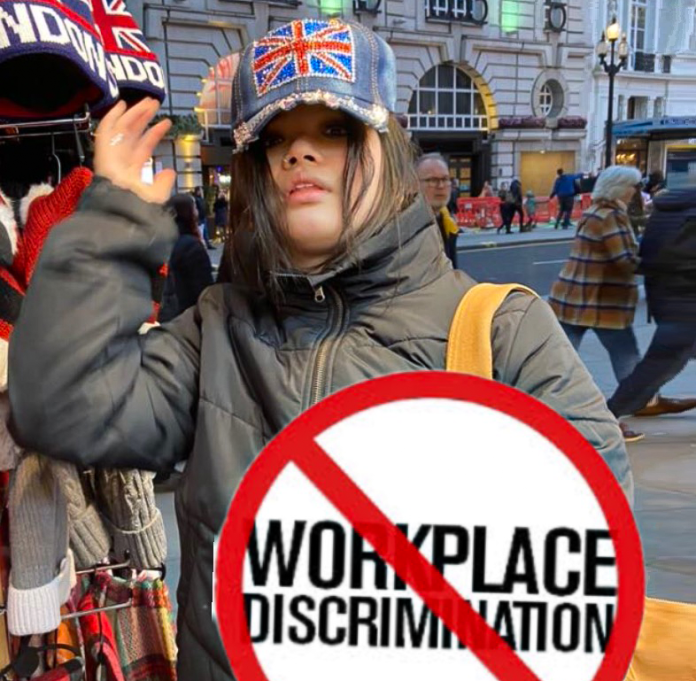Jakarta, Komite.id – Many people in the working world have experienced prejudice which is frequent in many nations. This holds true in the labour market. This article shows the challenges of workplace discrimination caused by people working with historical disadvantages such as race/ethnicity, gender, and religion.
The Equality Act of 2010 recognised the need to safeguard people from discrimination legally and identifies nine bases of potential discrimination: race/ethnicity, religion, nationality, age, disability, gender, gender identity, sexual orientation and social class background. This paper will examine unfair discrimination in the workplace mainly against race, gender and religion. This will entail conducting a thorough study of relevant literature, presenting various views, and critically analysing offered argument, determining if they conform to or depart from academic content.
Inequality in organisations is defined as systematic differences in power and control over goals, resources, and outcomes; workplace decisions such as how to organise; opportunities for promotion and interesting work; job security and benefits; pay and other monetary rewards; respect; and pleasures in work relations. Acker (2006) argues that equality rarely exists in control over goals and resources, and wages and monetary rewards are frequently unequal. Other inequalities may be less evident, or there may be a great degree of equality in specific job sectors, such as job security and benefits. In terms of informal interactions, when white men devalue and exclude white women and people of colour by failing to listen to them in meetings, declining to invite them to join a group out for a drink after work, and failing to seek their input on workplace issues.
Although ethnic minorities are more likely to be promoted to CEO in high-performing companies, when performance declines, a white leader will take over. Companies should try to eliminate bias, according to the authors, by giving minority leaders ample time and resources to demonstrate their leadership abilities and by increasing the openness of the decision-making process involved in business promotions. According to Nazroo and Kapadia (2013), the unemployment rates of the Black Caribbean and Pakistani men and women are 1.5 over three times greater than those of white men and women. Furthermore, compared to BME people who do not share this concern, ethnic minority people who fear institutional racism are roughly half as likely to feel they belong in Britain.
One of the causes of gender discrimination in the workplace is stereotypes and deep-rooted biases. These biases are also present in HR procedures such as policies, decision-making, and implementation impact women’s hiring, training, salary, and advancement. There is plenty of evidence that women’s performance on male-typed tasks is skewed. According to a meta-analysis of experimental investigations, women in leadership roles receive worse performance assessments than males; this increase when women act stereotypically masculine, i.e. in an agentic manner.
In addition, women are held to a greater level of performance than males in masculine fields. For example, in a study of military cadets, men and women awarded their female counterparts lower evaluations despite having comparable qualifications (Bolry et al., 2001). Therefore, there is a lot of stigma and gender bias in the workplace regarding females breaking over the glass ceiling, even if they achieved the same qualifications. As a result, many women nowadays in the workplace face unfair discrimination.
 Finally, in the circumstances involving complicated problem solving, people are distrustful of women’s knowledge and discount expert women’s perspectives while giving expert males the benefit of the doubt. In an experiment, Masser and Abrams (2018) discovered that the greater the participants’ hostile sexism score, the more likely they were to suggest a male applicant for a management job over a female candidate. Female managers and leaders are locked in a double-blind system, with less value on feminine attributes and penalties for anti-social behaviour.
Finally, in the circumstances involving complicated problem solving, people are distrustful of women’s knowledge and discount expert women’s perspectives while giving expert males the benefit of the doubt. In an experiment, Masser and Abrams (2018) discovered that the greater the participants’ hostile sexism score, the more likely they were to suggest a male applicant for a management job over a female candidate. Female managers and leaders are locked in a double-blind system, with less value on feminine attributes and penalties for anti-social behaviour.
Nearly most men were managers, while white-collar workers at lower levels were always women. Gendered and sexualised attitudes and assumptions affected workplace class relations, such as supervisory practices and wage-setting processes. Many firms now have women in management positions, yet women still achieve the majority of secretaries, clerks, waitresses, and caregivers.
Religion is increasingly understood as a cause for unfair discrimination in the workplace. According to Equal Employment Opportunity Commission (EEOC), the number of claims claiming religious discrimination nearly quadrupled between 2000 and 2010, according to Equal Employment Opportunity Commission (EEOC), compared to a 24 per cent increase for race, 45 per cent increase for national origin, and 15 per cent for sex-based charges over the same time. The workplace harassment of Muslims is one of the most well-known incidents of religious discrimination (Malos, 2010).
In Zayed v. Apple Computers, an employee stated that other colleagues were pointing their fingers at her and interrogating her about suicide bombers. Many Apple employees’ doors were decorated with red, white, and blue ribbons, but not hers. The Plaintiff felt like she was on the outside looking in. As a result, her performance was lowered, and she was eventually demoted and fired.
Although religious-based claims account for less than 5% of all employment discrimination claims presented to the EOCC, these figures show that religious-based discrimination has surged four times faster than most protected categories under the CRA. Muslim men work in the distribution, inn, and restaurant industries, and Jewish men work in banking, finance, and security. Particular complications emerge in religious discrimination since any rights developed to safeguard individuals’ religious freedom in the workplace will equally apply to those not religious.
By limiting any exemption to individuals who perform a religious function at work, religious organisations may be forced to hire people who do not share their views. Caribbean managers, for example, were more sympathetic to the CBP workers. Moreover, the issue of religion was perceived as a source of inequality in terms of appearance, access to prayer rooms, flexibility in praying, and exclusion of alcohol and gambling-related events.





















